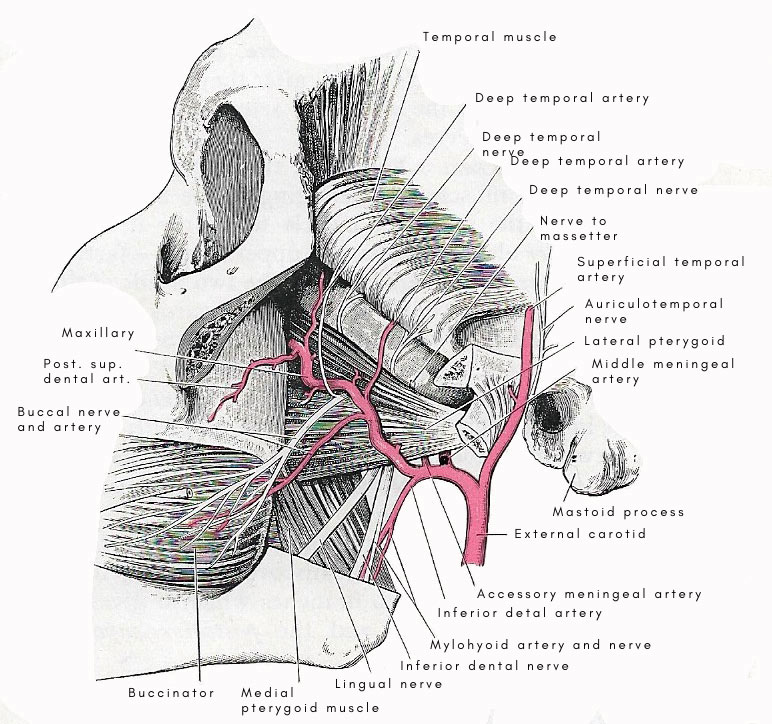temporal muscle

Dissection of the infratemporal fossa.
The temporal muscle, or temporalis, is thin, fan-shaped muscle, which arises from the whole of the floor of the temporal fossa and receives additional fibers from the temporal fascia. From this broad origin the fasciculi converge upon the coronoid process of the mandible. The anterior fibres descend vertically, the posterior at first pursue a nearly horizontal course, and the middle fibres proceed with varying degrees of obliquity. A tendon developed on the lower part of its superficial surface is inserted into the summit and anterior edge of the coronoid process and extends downwards along the anterior edge of the ramus. The deep part of the muscle remains fleshy, and gains insertion to the medial surface of the coronoid process – an attachment which, becoming tendinous, reaches as low down as a point behind the third molar tooth, where the anterior margin of the ramus merges into the body of the mandible. In many cases, some of the superficial fibres join the masseter and gain insertion into the mandible through it.
The temporal muscle raises the mandible and retracts it after protraction. It is supplied by the deep temporal branches of the mandible nerve.


